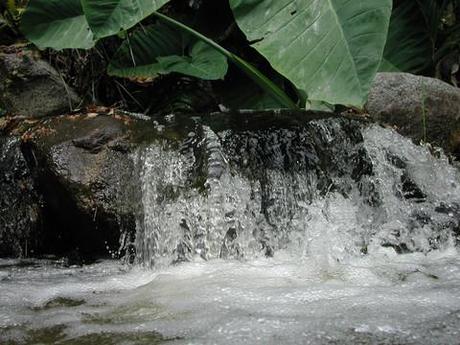
Let’s start with the obvious; having a steady supply of clean water is critical to life. Now, if you’ve followed along with my “Getting Started” blogs then you should have an idea of the scenarios that effect your water supply which should in turn give you an idea of if you need 1 day, 3 days, 2 years, or however long supply of water. From that we can determine how much water you really need, but first let’s talk about the uses of water.
- Drinking – clearly.
- Hygiene – brushing teeth, hand washing, bathing
- Cooking – Don’t forget most of those freeze dried foods need water too
- Sanitation – a normal toilet can use a lot of water
- Garden – gotta keep those plants growing
- Cleaning – clothing, household items, etc.
Now for items 1, 2, and 3 you need potable water. For 4 and 5 you don’t. Although for 5 you clearly don’t want badly contaminated water, but it doesn’t have to meet the standards of potable. The general rule of thumb is you need a gallon of water a day (per person) to cover 1 and 3. But let’s not forget number 2. If we leave out bathing, another gallon should cover teeth and hand-washing. You need to be even more religious about hand washing in a crisis situation. With reduced access to medical services, disease prevention has to be a top priority. Now, Item 6 is a bit of a mixed bag. Non-potable water is fine for washing your clothes (generally), but you need potable water for your dishes and anything that food will touch. Number 4 will depend a lot on your situation…are you going to continue to use a “normal” toilet or build an “outhouse” or make use of a chemical toilet or some type of self-composting system. I’m not going to go into all those details now, but your choice will have a considerable impact on the non-potable water needs…it could be as high as 7 gallons per person. Likewise number 5 depends a lot on where you live, how big the garden is, and what type of food is growing there.
So for right now let’s focus on the potable side. Needing 2 gallons per person per day adds up fast (and bear in mind that right now the average American actually uses around 100 gallons a day, so we’re talking a big lifestyle change). Unless you have a nice retreat somewhere with large water tanks, you’re probably not going to be storing 3 years’ worth of water for your family. I recommend though you have at least 2 weeks’ worth and then a method to get more after the SHTF. If you did the pre-work you know how long you need water, but honestly I think 2 weeks is a minimum (the Red Cross agrees and even FEMA says you should have 3 days). In one of my earlier posts I mention I used the Water Bricks to start building out, and I do really like them. If space and carrying flexibility are not a concern you can also buy the large barrel type systems. Just make sure whatever you get is an FDA approved container for holding water. How long is stored water good for? Well…water itself is not going to go bad, technically it’s good forever. But sadly there are all kinds of things in water that can make it bad to drink over time. Most sources agree that stored “tap water” is fine for six months, but again this depends a lot on the quality of the water, the container, and where it’s stored. We can go into that topic in more detail later if there is an interest.
So how do we get the rest of our water if it’s not possible to store it all? Ideally you’d have a nice deep well or natural spring on your property. Rivers and lakes come in handy in that way too :). For a lot of us though it’s going to come to things like rain/snow/dew collection. Or (heaven help you) a solar still. I’m not going to go into details right now about those methods as they really deserve their own posts. Likewise, we’ll talk about the different ways to make all of this collected water safe to drink in a future post as well.
Now using the charts I made in the “Getting Started” blogs to understand the scenarios and impacts I was concerned about allowed me to build a water storage plan that looked something like this. (not exactly, just an example) What you’re not seeing here is my “full water plan” which also covered things in the on-going retrieval and cleaning of water.
Priority
Need
Acquisition Timeframe (Goal)
1
Storage for 2 weeks of Potable Water
Immediate
2
Storage for 1 month of Potable Water
2-3 months
3
Storage for 1 month non-Potable Water
2-3 months
4
Storage for 3 months of Potable Water
6 months
5
Storage for 3 months of non-Potable Water
6 months
Ultimately this is the goal of all this homework…to get a consolidated list of skills and items in a prioritized order for you to become an Organized Prepper.
